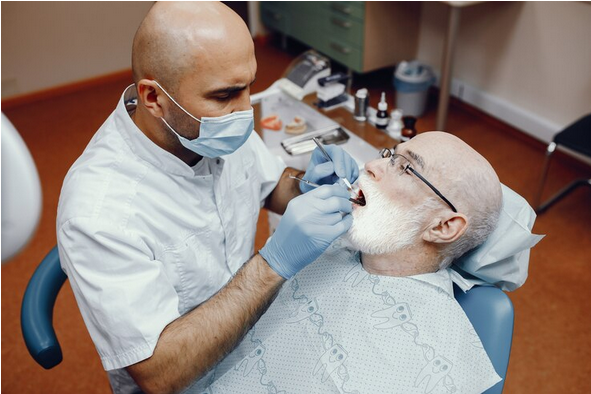Dental implants have become a popular and reliable solution for individuals who are missing one or more teeth. If you’re considering dental implants, it’s essential to understand the comprehensive process involved, from the initial consultation to the final restoration. In this comprehensive guide, we’ll walk you through the dental implant process, step-by-step, so you can feel informed and prepared throughout your journey to a beautiful, functional smile.
The Initial Consultation
The first step in the dental implant process is the initial consultation with a qualified dental professional. During this appointment, the dentist will thoroughly examine your oral health, assess the condition of your remaining teeth, and evaluate the available bone structure in the area where the implant(s) will be placed.This comprehensive evaluation often includes digital imaging, such as X-rays or cone-beam computed tomography (CBCT) scans, which provide detailed, three-dimensional images of your jawbone and surrounding structures. These diagnostic tools allow the dentist to accurately evaluate the available bone volume and quality, as well as identify any potential challenges or complications that may need to be addressed.Based on the findings from the initial consultation, the dentist will work with you to develop a personalized treatment plan, outlining the specific steps and procedures required to achieve your desired outcome. This may include additional preparatory treatments, such as tooth extractions, bone grafting, or sinus lifts, to ensure the ideal foundation for the implant placement.
Implant Placement
Once the preparatory phase is complete, the next step in the dental implant process is the actual placement of the implant(s). This procedure is typically performed under local anesthesia, and in some cases, the dentist may also offer sedation options to ensure your comfort throughout the process.During the implant placement procedure, the dentist will create a small opening in the gum tissue and carefully prepare the underlying bone to receive the titanium implant post. The implant is then precisely positioned into the prepared site, and the gum tissue is closed around it, allowing the area to heal and the implant to integrate with the surrounding bone.This integration process, known as osseointegration, is crucial for the long-term success of the dental implant. It typically takes several months to complete, during which time the patient may be fitted with a temporary restoration to maintain the appearance and function of the missing tooth.
Abutment Placement and Restoration
Once the implant has successfully integrated with the bone, the next step in the dental implant process is the placement of the abutment. The abutment is a small, connecting piece that sits on top of the implant and provides the foundation for the final restoration, such as a crown, bridge, or denture.During this procedure, the dentist will reopen the gum tissue to expose the top of the implant and attach the abutment. This step is typically completed under local anesthesia and is relatively straightforward, requiring only a brief appointment.After the abutment is in place, the dentist will take impressions or digital scans of the area, which will be used to fabricate the final restoration. This process may involve several additional appointments, as the dentist works closely with a dental laboratory to ensure the perfect fit, color, and alignment of the new tooth or teeth.
Restoration Delivery and Aftercare
The final step in the dental implant process is the delivery and placement of the custom-made restoration. This appointment is typically the most exciting, as you’ll finally get to see the end result of your dental implant journey.The dentist will carefully place the restoration onto the abutment, ensuring a secure and comfortable fit. They may make minor adjustments to the shape, bite, and overall appearance of the restoration to ensure a natural-looking and functional result.Once the restoration is in place, the dentist will provide you with detailed instructions on how to care for your new implant-supported tooth or teeth. This may include recommendations for oral hygiene practices, dietary considerations, and the frequency of follow-up appointments to monitor the long-term success of the implant.
Conclusion
The dental implant process can seem daunting at first, but with the guidance of a qualified dental professional, it can be a straightforward and rewarding experience. By understanding the comprehensive steps involved, from the initial consultation to the final restoration, you can feel empowered and confident in your decision to choose dental implants as the solution for your missing teeth.Remember, the success of your dental implant treatment relies heavily on the expertise and experience of your dental team, as well as your own commitment to proper oral hygiene and follow-up care. By working closely with your dentist and following their instructions, you can achieve a beautiful, functional, and long-lasting smile that will enhance your overall quality of life.

